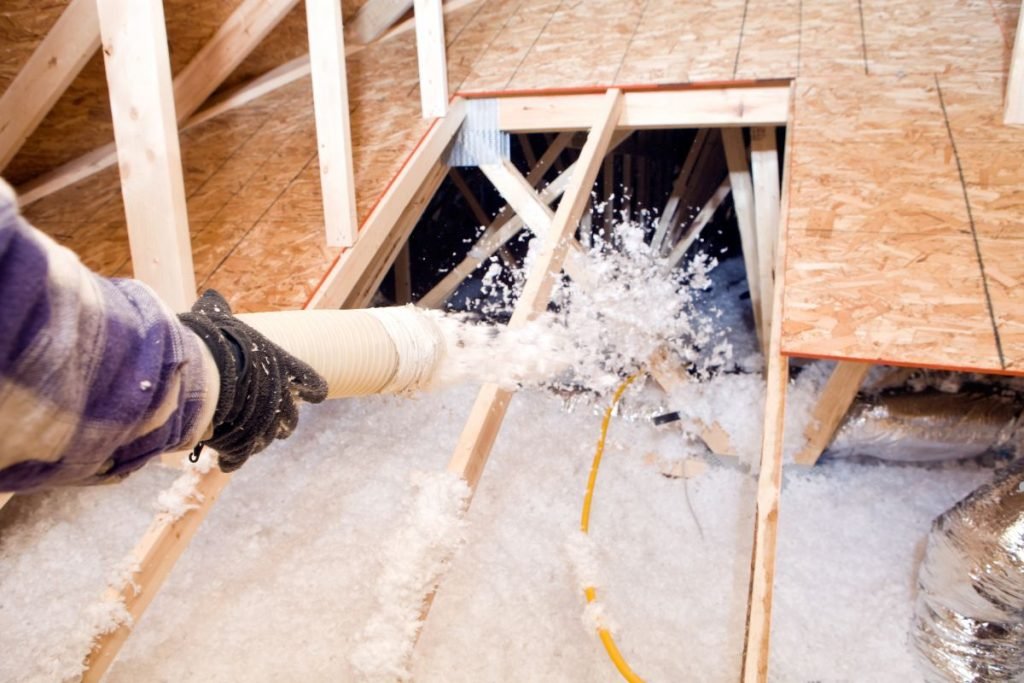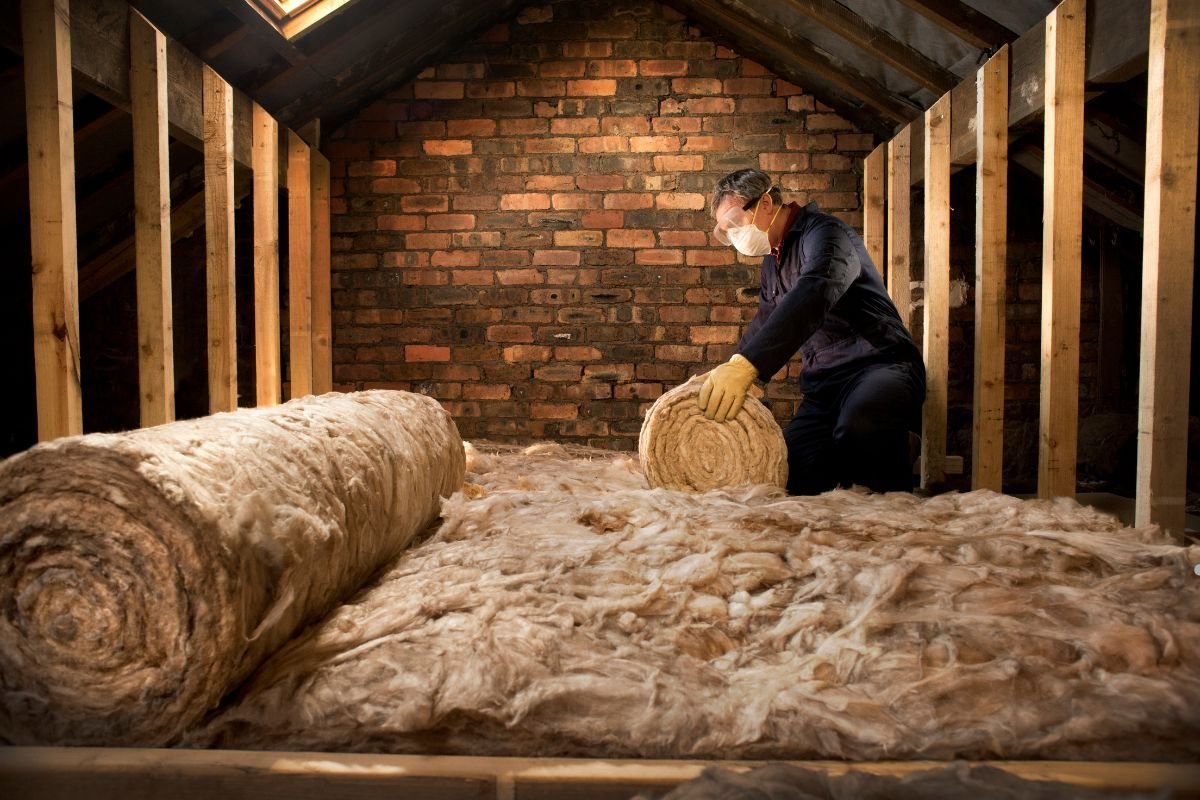
Are you tired of high energy bills and uncomfortable rooms? The key to a more comfortable and energy-efficient home often lies within your insulation, and understanding R-value is the first step. In short, R-value measures the thermal resistance of insulation – its ability to resist heat flow. The higher the R-value, the better the insulation’s performance. This article will comprehensively guide you through understanding R-value, its importance, and how it impacts your home.
What is R-Value?
R-value is a measurement of thermal resistance used in the building and construction industry. Specifically, it quantifies how well a material resists the conductive flow of heat. It’s a crucial factor when choosing insulation because it directly impacts how well your home can maintain a comfortable temperature while minimizing energy waste. The higher the R-value, the greater the insulating power. Understanding insulation measurement is crucial for making informed decisions.
How R-Value Works
The effectiveness of insulation is directly related to its R-value. Insulation with a higher R-value provides a greater barrier to heat transfer. In the winter, it helps keep heat inside your home, preventing it from escaping to the colder outdoors. In the summer, it works in reverse, keeping the heat out and maintaining a cool indoor environment. This directly impacts your energy bills and the overall comfort of your living space. Improving insulation effectiveness can significantly impact energy bills.
Explore Our Services to find the perfect insulation solution for your home. Enhance comfort, save energy, and go green today!
Types of Insulation and Their R-Values

Different types of insulation materials offer varying R-values per inch of thickness. Here’s a brief overview of some common types:
- Fiberglass Insulation: A widely used and cost-effective option, fiberglass typically has an R-value of 2.2 to 2.9 per inch. Fiberglass insulation R-value makes it a budget-friendly choice.
- Spray Foam Insulation: Offering excellent air sealing properties, spray foam comes in open-cell (R-3.7 per inch) and closed-cell (R-6.5 per inch) varieties.
- Cellulose Insulation: Made from recycled paper, cellulose has an R-value of around 3.1 to 3.7 per inch. Choosing cellulose insulation R-value can be an environmentally friendly option.
- Rockwool Insulation: Also known as mineral wool, rockwool offers good fire resistance and an R-value of 3.0 to 3.3 per inch.
- Others: Other options include radiant barriers, rigid foam boards, and structural insulated panels (SIPs), each with its own R-value range.
Improve your home’s comfort and energy efficiency with our expert insulation services! Lower your energy bills and stay comfortable year-round. Call us today for a free consultation and start saving!
R-Value Recommendations by Climate Zone
The ideal R-value for your home depends on your climate. The U.S. Department of Energy provides recommendations based on climate zones. Colder climates generally require higher R-values in attics, walls, and floors compared to warmer climates. Local building codes may also dictate minimum R-value requirements. Check your local building codes for specific information.
Where to Insulate in Your Home

Insulating the right areas of your home is crucial for maximizing energy efficiency. Key areas to consider include:
- Attics: A significant amount of heat can be lost through an uninsulated attic.
- Walls: Insulating exterior walls helps prevent heat transfer.
- Floors: Insulating floors above unheated spaces like crawl spaces or garages is important.
- Crawl Spaces: Insulating crawl space walls or ceilings can improve comfort and energy efficiency.
- Basements: Insulating basement walls can help reduce heat loss and improve comfort.
Effective insulation plays a crucial role in protecting the environment by significantly reducing energy consumption, cutting greenhouse gas emissions, conserving natural resources, and enhancing indoor air quality. An energy-efficient home not only lowers utility costs but also supports a greener future. Learn more in our detailed guide.
Factors Affecting Insulation Performance Beyond R-Value
While R-value is important, other factors also affect insulation performance. These include installation quality, air leaks, and moisture. Poor installation can significantly reduce the effectiveness of even high-R-value insulation. Air leaks allow heat to bypass the insulation altogether, and moisture can degrade insulation over time. Proper insulation installation ensures long-term performance.
Understanding R-Value is crucial for effective home insulation and energy savings! Ensure maximum comfort and efficiency with the right insulation. Call us now for expert guidance and insulation solutions tailored to your needs!
DIY vs. Professional Insulation
While some insulation projects can be tackled as DIY projects, others are best left to professionals. DIY insulation can save money on labor costs, but it requires careful attention to detail and proper safety precautions. Professional insulation ensures proper installation, air sealing, and can help identify and address any underlying issues. Choosing professional insulation can provide peace of mind.
FAQs about R-Value and Insulation
What R-value do I need for my attic?
The recommended attic R-value varies by climate zone but generally ranges from R-30 to R-60.
Is a higher R-value always better?
While a higher R-value generally means better insulation, there are diminishing returns. In some cases, the cost of a very high R-value may not justify the energy savings.
How much does insulation cost?
Insulation costs vary depending on the type of insulation, the size of the area to be insulated, and labor costs. Get a professional estimate for accurate pricing.
How can I find a qualified insulation contractor?
Look for contractors with experience, proper licensing and insurance, and positive reviews.
Does R-value degrade over time?
Some insulation materials can lose some R-value over time due to compression, moisture, or other factors. Regular inspections can help identify any issues.
Conclusion
Understanding R-value is essential for making informed decisions about home insulation. By choosing the right insulation with the appropriate R-value for your climate and ensuring proper installation, you can significantly improve your home’s comfort, reduce energy bills, and create a more sustainable living environment. Now is the time to save money on energy bills!
Enhance your home’s comfort and energy efficiency with our expert insulation services! Lower your energy bills and reduce your carbon footprint. Contact us today for a free consultation and get started on a more sustainable home!
